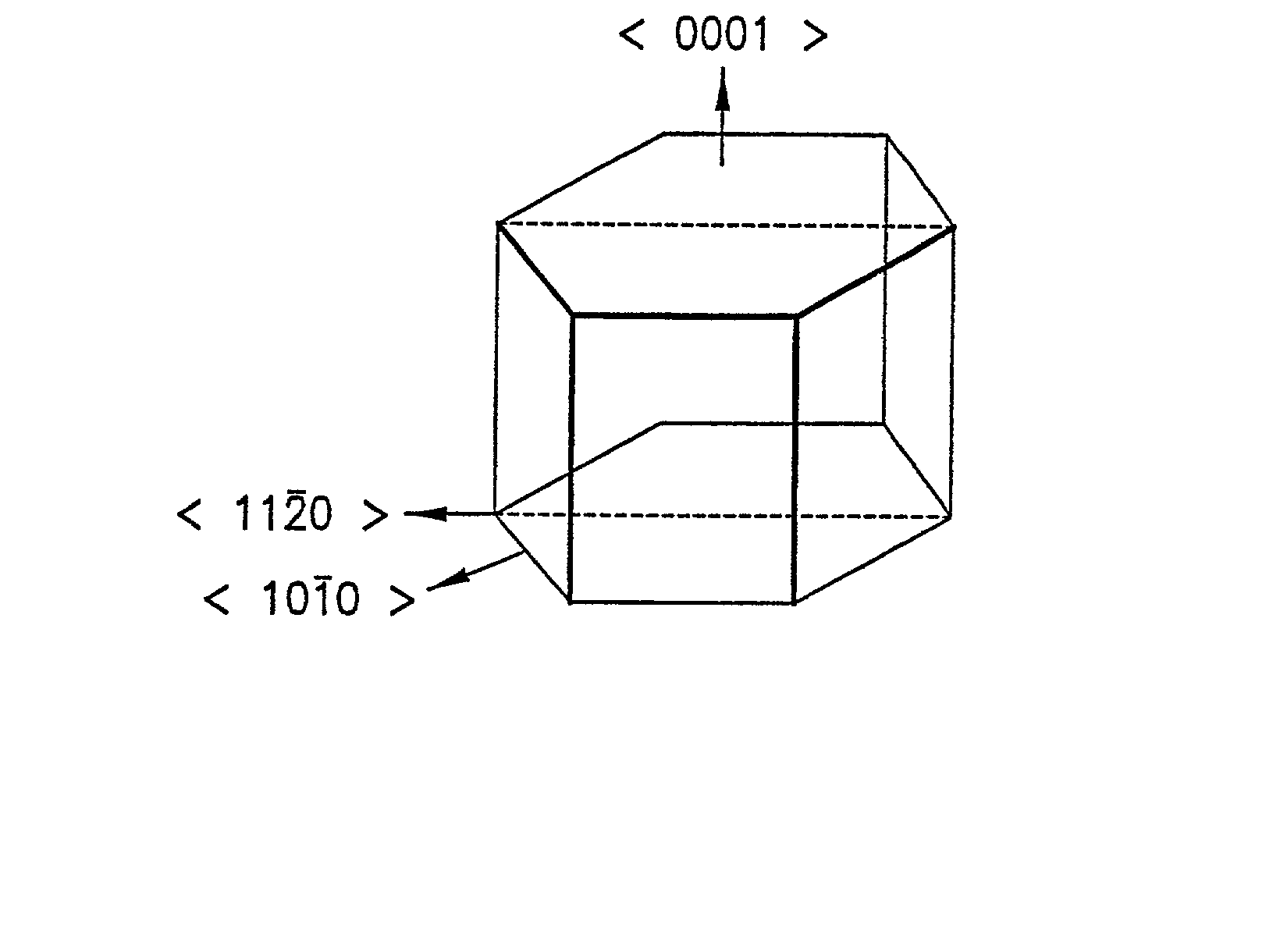Silicon carbide epitaxial layers grown on substrates offcut towards <1100>
a technology of silicon carbide and epitaxial layers, which is applied in the direction of cellulosic plastic layered products, natural mineral layered products, transportation and packaging, etc., can solve the problems of premature oxide breakdown, surface more reactive, and prone to undesirable impurity incorporation
- Summary
- Abstract
- Description
- Claims
- Application Information
AI Technical Summary
Benefits of technology
Problems solved by technology
Method used
Image
Examples
Embodiment Construction
[0036] While the ensuing description of the invention is directed primarily to silicon carbide epitaxial films formed on 4H-SiC substrate materials, it will be appreciated that the utility of the invention is not thus limited, and that the invention broadly contemplates the formation of epitaxial silicon carbide on other types of silicon carbide substrates, such as exist in a great variety of hexagonal (H), rhombohedral (R) and cubic (C) crystal forms, among the more than 200 polytypes of silicon-carbide. Illustrative polytypes include 4H-SiC, 6H-SiC, 15R-SiC and 3C-SiC. 4H-SiC and 6H-SiC are presently preferred, with 4H-SiC being most preferred.
[0037] In this respect, it is to be noted that the offcut epitaxial SiC growth surface is described herein for various hexagonal crystallographic forms of SiC, in corresponding hexagonal directional notation. For other crystalline forms of SiC, e.g., rhombohedral, cubic, etc., suitable offcut surfaces may be analogously described with respec...
PUM
| Property | Measurement | Unit |
|---|---|---|
| offcut angle | aaaaa | aaaaa |
| offcut angle | aaaaa | aaaaa |
| root mean square roughness | aaaaa | aaaaa |
Abstract
Description
Claims
Application Information
 Login to View More
Login to View More - R&D
- Intellectual Property
- Life Sciences
- Materials
- Tech Scout
- Unparalleled Data Quality
- Higher Quality Content
- 60% Fewer Hallucinations
Browse by: Latest US Patents, China's latest patents, Technical Efficacy Thesaurus, Application Domain, Technology Topic, Popular Technical Reports.
© 2025 PatSnap. All rights reserved.Legal|Privacy policy|Modern Slavery Act Transparency Statement|Sitemap|About US| Contact US: help@patsnap.com



